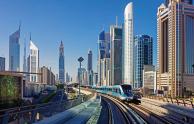Using carbon-reducing strategies like improving public transport, increasing building efficiency, and waste management in cities could produce savings of nearly US$17 trillion by 2050 according to a new report by the New Climate Economy. With actions such as aggressive use of solar, methane capture in landfills and expansion of public transit cities could also reduce greenhouse gas emissions by 3.7 Gt CO2e per year by 2030, more than the current annual emissions of India.
“Many of the most important new initiatives of this century — from the smoking ban adopted in New York City to the bus rapid transit system pioneered in Bogotá — have emerged from cities,” wrote Michael R. Bloomberg, UN Secretary-General’s Special Envoy for Cities and Climate Change in Foreign Affairs last month. “Mayors are turning their city halls into policy labs, conducting experiments on a grand scale and implementing large-scale ideas to address problems, such as climate change, that often divide and paralyze national governments.”
“There is now increasing evidence that emissions can decrease while economies continue to grow,” said Seth Schultz to The Guardian. Schultz, a researcher for the C40 Cities Climate Leadership Group who consulted on the report, went on to say, “Becoming more sustainable and putting the world – specifically cities – on a low carbon trajectory is actually feasible and good economics.”
The report recommends that cities start to implement these low-carbon urban development strategies by 2020. It also recommends cities commit to the Compact of Mayors, a global coalition of mayors and city officials pledging to reduce local greenhouse gas emissions, enhance resilience to climate change, and track their progress transparently. More than 130 cities – representing more than 220 million people – have already committed to the Compact of Mayors and will be setting ambitious emissions reduction targets and reporting publicly.
The report offers numerous examples of cities that have achieved or can achieve economic benefits from green investments.
- Bus Rapid Transit: The economic returns of Johannesburg’s Bus Rapid Transit system in its first phase were close to US$900 million.
- Building efficiency: Singapore’s “Green Mark” program, for instance, which aims to cover 80% of its buildings by 2030, could see a reduction in building electricity use of 22% and net economic savings of over US$400 million.
- Cycling: Copenhagen’s planned Cycle Super Highways are estimated to have an internal rate of return on investment of 19% per year.
Nick Godfrey, Head of Policy and Urban Development at the New Climate Economy and an author off the report, added this context: “US$17 trillion in savings is actually a very conservative estimate,” he said, “because it only looks at direct energy savings generated from investment, which are a small proportion of the wider social, economic, and environmental benefits of these investments.”
The report, Accelerating Low-Carbon Development in the World’s Cities, can be found here.


